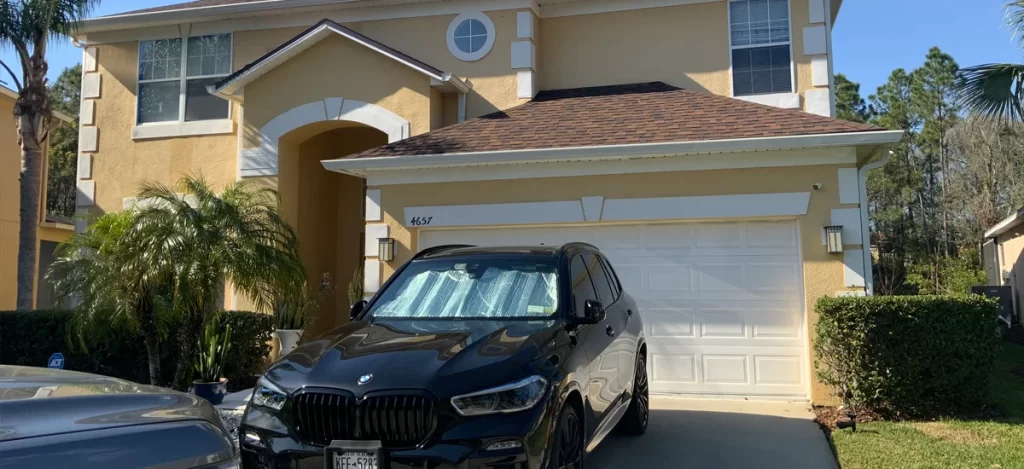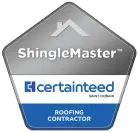Benefits of Metal Roofs in Storm-Prone Areas
Introduction
In regions where severe weather events are frequent, the importance of a resilient and durable roofing system cannot be overstated. Homeowners and businesses in storm-prone areas need a roofing solution that offers unparalleled protection against the elements. Metal roofs have emerged as a superior choice, providing a myriad of benefits that address the challenges posed by harsh weather conditions. This article delves into the advantages of metal roofs in storm-prone areas, highlighting their durability, weather resistance, and long-term value.
Why Choose Metal Roofs in Storm-Prone Areas
Metal roofs have gained popularity in storm-prone areas due to their exceptional performance in adverse weather conditions. Unlike traditional roofing materials, metal roofs are engineered to withstand the harshest elements, including high winds, hail, and heavy rain. The inherent strength and resilience of metal make it an ideal choice for areas prone to hurricanes, tornadoes, and other severe weather events.
Durability of Metal Roofs
One of the primary reasons homeowners opt for metal roofs is their impressive durability. Metal roofing materials, such as steel, aluminum, and copper, are known for their long lifespan, often lasting 40-70 years or more. This longevity is a significant advantage in storm-prone regions, where the frequent replacement of less durable roofing materials can be both costly and inconvenient. The robust nature of metal roofs ensures that they remain intact and functional, even after multiple severe weather events.
Weather Resistance
Metal roofs are designed to resist the damaging effects of extreme weather. Their ability to shed rainwater quickly and efficiently reduces the risk of water damage and leaks. Additionally, metal roofs are less likely to suffer from warping, cracking, or splitting compared to asphalt shingles and other roofing materials. This superior weather resistance makes metal roofs an ideal choice for storm-prone areas, providing peace of mind to homeowners and business owners alike.
Impact Resistance of Metal Roofs
Hailstorms and falling debris can cause significant damage to traditional roofing materials. Metal roofs, however, offer excellent impact resistance, withstanding hail and other debris without sustaining major damage. The durability of metal roofing panels ensures that they can endure the force of impact, protecting the underlying structure of the building. This resistance to impact damage is particularly beneficial in areas where hailstorms are common.
Wind Resistance Capabilities
High winds pose a serious threat to the integrity of roofing systems. Metal roofs are designed to resist wind uplift, with many systems rated to withstand winds up to 140 mph or more. This wind resistance is achieved through interlocking panels and secure fastening systems that keep the roof in place during powerful windstorms. For homeowners in hurricane-prone regions, the superior wind resistance of metal roofs offers a critical layer of protection.
Fire Resistance Benefits
In addition to their resistance to wind and impact, metal roofs also offer excellent fire resistance. Metal roofing materials are non-combustible and have a Class A fire rating, the highest rating available. This fire resistance can be a lifesaver in areas prone to wildfires or where lightning strikes are common. Choosing a metal roof can significantly reduce the risk of fire damage to your home or business.
Lightweight Advantage
Metal roofs are considerably lighter than traditional roofing materials such as concrete tiles or slate. This lightweight nature makes them easier and quicker to install, reducing labor costs and installation time. Additionally, the reduced weight puts less stress on the building structure, which can be particularly advantageous in older homes or buildings with structural limitations.
Energy Efficiency of Metal Roofs
Another compelling benefit of metal roofs is their energy efficiency. Metal roofing materials reflect solar radiant heat, which can reduce cooling costs by up to 25%. Many metal roofs also have reflective coatings that enhance their energy-saving properties. In storm-prone areas where power outages are common, the energy efficiency of metal roofs can help maintain more stable indoor temperatures, providing comfort and cost savings.
Low Maintenance Requirements
Metal roofs require minimal maintenance compared to other roofing materials. Their resistance to mold, mildew, and pests eliminates the need for frequent inspections and repairs. Additionally, the longevity of metal roofs means that homeowners can enjoy years of worry-free performance. Regular maintenance for metal roofs typically involves simple tasks such as clearing debris and checking for minor damage, making them an attractive option for those seeking low-maintenance roofing solutions.
Environmental Sustainability
Sustainability is an increasingly important consideration for homeowners. Metal roofs are environmentally friendly due to their recyclability and energy efficiency. Most metal roofing materials are made from recycled content and can be fully recycled at the end of their lifespan. Additionally, the energy savings provided by metal roofs contribute to a reduced carbon footprint. Choosing a metal roof is a sustainable choice that benefits both the environment and the homeowner.
Aesthetic Appeal of Metal Roofs
Metal roofs are available in a wide range of styles, colors, and finishes, allowing homeowners to achieve the desired look for their homes. Whether you prefer the traditional appearance of standing seam metal roofs or the textured look of metal shingles, there are options to suit every aesthetic preference. The versatility of metal roofing materials ensures that they can complement various architectural styles, enhancing the curb appeal of any property.
Installation Considerations
While metal roofs offer numerous benefits, proper installation is crucial to their performance. It is essential to work with experienced roofing contractors who have expertise in installing metal roofs. Proper installation ensures that the roof will meet its wind and weather resistance ratings and provide the expected longevity and durability. Homeowners should choose contractors with a proven track record in metal roof installations to ensure optimal results.
Cost-Effectiveness of Metal Roofs
Although the initial cost of metal roofs can be higher than that of traditional roofing materials, their long-term cost-effectiveness makes them a worthwhile investment. The longevity, durability, and low maintenance requirements of metal roofs result in significant savings over time. Additionally, the energy efficiency of metal roofs can lead to lower utility bills, further enhancing their cost-effectiveness. For homeowners in storm-prone areas, the reduced risk of damage and repair costs adds to the overall value of metal roofs.
Versatility in Design Options
The design versatility of metal roofs is another key advantage. Metal roofing materials can mimic the appearance of traditional roofing materials, such as shingles, tiles, and slate, while offering the superior performance benefits of metal. This versatility allows homeowners to achieve the desired look for their homes without compromising on durability and weather resistance. Customization options, including various colors and finishes, enable homeowners to create a unique and personalized roofing solution.
Debunking Common Myths
Despite their numerous benefits, metal roofs are sometimes subject to misconceptions. One common myth is that metal roofs are noisy during rainstorms. In reality, when properly installed with solid sheathing and insulation, metal roofs can be quieter than traditional roofing materials. Another myth is that metal roofs attract lightning, but they are no more likely to be struck by lightning than any other type of roof. In fact, metal roofs can safely dissipate the energy of a lightning strike, reducing the risk of damage.
Comparison with Other Roofing Materials
When comparing metal roofs with other roofing materials, the advantages become evident. Asphalt shingles, for example, have a shorter lifespan and are more susceptible to damage from wind, hail, and fire. Concrete tiles are durable but heavy, requiring additional structural support. Wood shakes offer a natural appearance but are prone to rot, insects, and fire. Metal roofs, with their combination of durability, weather resistance, and energy efficiency, stand out as a superior choice for storm-prone areas.
Adherence to Local Building Codes
In storm-prone areas, adherence to local building codes and regulations is crucial. Metal roofs often meet or exceed these codes, providing added assurance of their performance in severe weather conditions. Homeowners should ensure that their roofing contractor is familiar with local building codes and can install the roof in compliance with these regulations. This adherence not only ensures safety but also enhances the roof’s ability to withstand storms.
Case Studies of Metal Roofs in Storm-Prone Areas
Real-world examples of metal roofs performing well in storm-prone areas further illustrate their benefits. Numerous case studies highlight the resilience of metal roofs in the face of hurricanes, tornadoes, and hailstorms. These examples demonstrate that metal roofs can remain intact and protect the underlying structure even after severe weather events. Homeowners and businesses in storm-prone regions can take confidence in these real-world successes when choosing a metal roof.
Expert Opinions on Metal Roofs
Experts in the roofing industry consistently endorse metal roofs for their performance in storm-prone areas. Roofing professionals and industry organizations highlight the advantages of metal roofs, including their durability, weather resistance, and long-term value. These expert opinions provide valuable insights and further validate the benefits of metal roofs for homeowners and businesses seeking reliable and resilient roofing solutions.
Insurance Benefits
Homeowners with metal roofs may also benefit from lower insurance premiums. Insurance companies recognize the durability and weather resistance of metal roofs, often offering discounts to homeowners who choose this roofing material. These insurance savings can offset the initial cost of the roof and contribute to its overall cost-effectiveness. Homeowners should consult with their insurance providers to explore potential discounts and benefits.
Long-Term Value Proposition
The long-term value proposition of metal roofs is compelling. The combination of durability, low maintenance, energy efficiency, and insurance savings results in a roofing solution that offers significant returns on investment. For homeowners in storm-prone areas, the reduced risk of damage and the associated repair costs further enhance the long-term value of metal roofs. This value proposition makes metal roofs an attractive option for those seeking a reliable and cost-effective roofing solution.
Customization and Personalization
Metal roofs offer extensive customization and personalization options. Homeowners can choose from a variety of styles, colors, and finishes to create a roof that complements their home’s architecture and personal preferences. Whether seeking a modern, traditional, or rustic look, metal roofing materials provide the flexibility to achieve the desired aesthetic. This customization ensures that metal roofs not only perform well but also enhance the overall appearance of the property.
Addressing Noise Concerns
Addressing concerns about noise, metal roofs, when installed with proper insulation and underlayment, can be as quiet as other roofing materials. The misconception that metal roofs are noisy during rainstorms is largely unfounded. With modern installation techniques and materials, metal roofs can provide a peaceful and quiet indoor environment, even during heavy rainfall.
Rust and Corrosion Prevention
Rust and corrosion are common concerns for metal roofs. However, modern metal roofing materials are designed with coatings and treatments that prevent rust and corrosion. Galvanized steel, for example, has a protective zinc coating that prevents rust. Aluminum and copper are naturally resistant to corrosion. These advancements ensure that metal roofs remain durable and visually appealing for decades, even in harsh weather conditions.
Advances in Metal Roofing Technology
Advancements in metal roofing technology have further enhanced the performance and benefits of metal roofs. Innovations in coating technologies, fastening systems, and insulation materials have improved the durability, energy efficiency, and weather resistance of metal roofs. Homeowners can take advantage of these technological advancements to achieve a roofing solution that meets their specific needs and provides long-term protection.
Protecting Your Investment
Choosing a metal roof is an investment in the future of your home or business. The durability and long-term performance of metal roofs protect your investment by reducing the need for frequent repairs and replacements. Additionally, the energy efficiency and insurance benefits contribute to cost savings over time. Protecting your investment with a metal roof ensures that your property remains safe and secure, even in the face of severe weather conditions.
Conclusion
In conclusion, metal roofs offer a comprehensive solution for homeowners and businesses in storm-prone areas. Their durability, weather resistance, energy efficiency, and long-term value make them an ideal choice for protecting properties against the elements. By choosing a metal roof, homeowners can enjoy peace of mind, knowing that their investment is safeguarded by one of the most resilient roofing materials available. With numerous customization options and a range of benefits, metal roofs stand out as a superior choice for storm-prone regions.
FAQs
What are the benefits of metal roofs in storm-prone areas?
Metal roofs offer exceptional durability, weather resistance, energy efficiency, and long-term value, making them ideal for storm-prone areas.
How do metal roofs withstand high winds?
Metal roofs are designed with interlocking panels and secure fastening systems that resist wind uplift, providing superior wind resistance.
Are metal roofs noisy during rainstorms?
When properly installed with insulation and underlayment, metal roofs can be as quiet as other roofing materials during rainstorms.
Do metal roofs require a lot of maintenance?
Metal roofs require minimal maintenance, typically involving simple tasks such as clearing debris and checking for minor damage.
Can metal roofs improve energy efficiency?
Yes, metal roofs reflect solar radiant heat, reducing cooling costs and enhancing energy efficiency.
Are metal roofs environmentally friendly?
Metal roofs are environmentally sustainable due to their recyclability and energy-saving properties.














